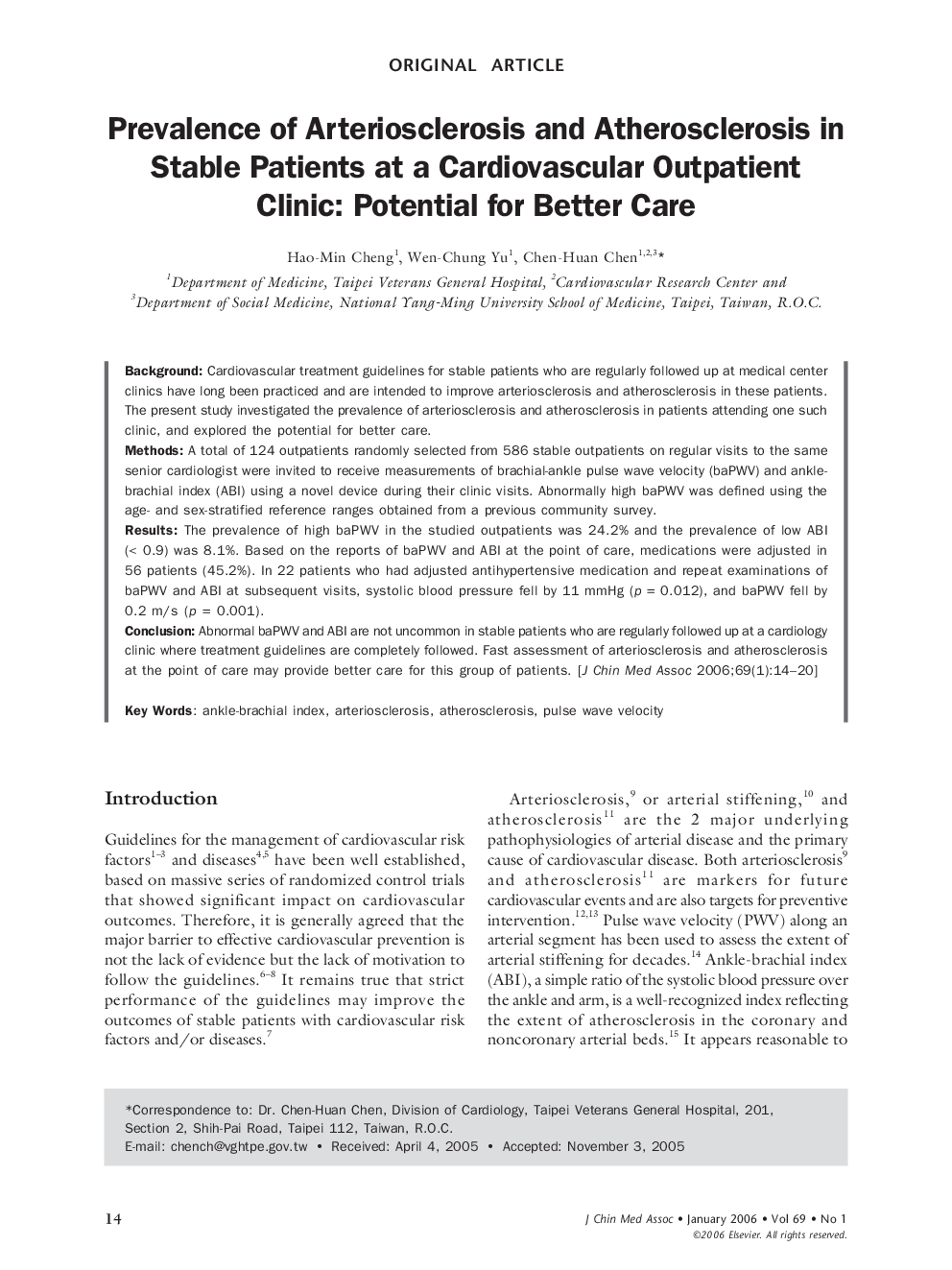| Article ID | Journal | Published Year | Pages | File Type |
|---|---|---|---|---|
| 3477689 | Journal of the Chinese Medical Association | 2006 | 7 Pages |
BackgroundCardiovascular treatment guidelines for stable patients who are regularly followed up at medical center clinics have long been practiced and are intended to improve arteriosclerosis and atherosclerosis in these patients. The present study investigated the prevalence of arteriosclerosis and atherosclerosis in patients attending one such clinic, and explored the potential for better care.MethodsA total of 124 outpatients randomly selected from 586 stable outpatients on regular visits to the same senior cardiologist were invited to receive measurements of brachial-ankle pulse wave velocity (baPWV) and ankle-brachial index (ABI) using a novel device during their clinic visits. Abnormally high baPWV was defined using the age- and sex-stratified reference ranges obtained from a previous community survey.ResultsThe prevalence of high baPWV in the studied outpatients was 24.2% and the prevalence of low ABI (< 0.9) was 8.1%. Based on the reports of baPWV and ABI at the point of care, medications were adjusted in 56 patients (45.2%). In 22 patients who had adjusted antihypertensive medication and repeat examinations of baPWV and ABI at subsequent visits, systolic blood pressure fell by 11 mmHg (p = 0.012), and baPWV fell by 0.2 m/s (p = 0.001).ConclusionAbnormal baPWV and ABI are not uncommon in stable patients who are regularly followed up at a cardiology clinic where treatment guidelines are completely followed. Fast assessment of arteriosclerosis and atherosclerosis at the point of care may provide better care for this group of patients.
